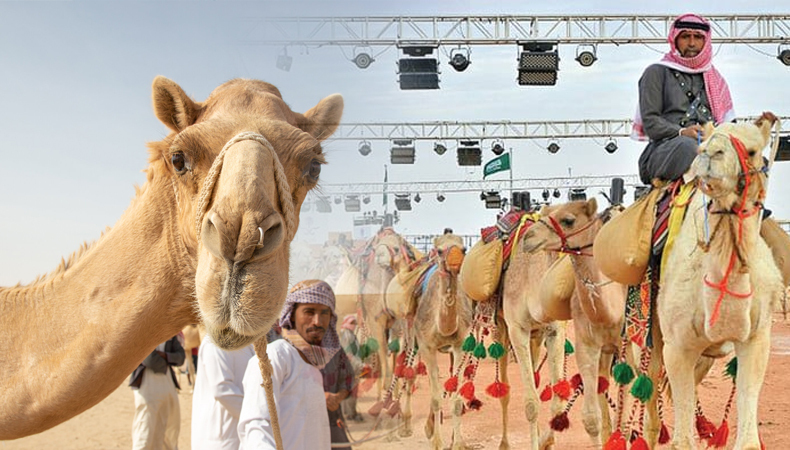King Abdulaziz Camel Festival in Saudi Arabia won by beauty queens of desert

The history and culture of the Middle East have long been linked to camels. In fact, they still serve as a source of clothes, food, and transportation for many Bedouin peoples who still reside in the Arabian deserts.
The potential of early Arab societies was historically released by the domestication of camels. Due to the speed and toughness of these “ships of the desert,” Arabian armies were able to quickly conquer territory and build vast empires.
Therefore, it should come as no surprise that celebrations of these traits and the significance of the single-humped dromedary to Arabian identity are conducted throughout the region, even as the Gulf governments quickly adopt the trappings of urbanisation.
The King Abdulaziz Camel Festival, also known as Mazayen Al-Ibl, is a notable occasion that takes place in the area. The camel beauty contest, one of Arabia’s most distinctive competitions, draws thousands of visitors to the festival every year.
The festival, which consists of 75 camel competitions, is one of the greatest events of its kind in the Middle East, with competitors competing for prizes worth up to SR100 million ($26 million). In fact, Saudi Arabia’s rare-camel breeding industry is a multimillion-dollar one.
Read | Saudi Arabia affirms support for Palestine after attacks on Al-Aqsa, says OIC envoy
The festival, which is held in a showground north of Riyadh, has been going on for a while, but it wasn’t until the Saudi Council of Ministers decided to formally regulate the event in 2017 that it developed into the high-profile spectacle that it is now.
Under the direction of Crown Prince Mohammed bin Salman, the King Abdulaziz Foundation for Research and Archives took over the operation of the festival, which had previously been organised by the Saudi Camel Club.
When one thinks about beauty, the camel is not usually the first animal that comes to mind. But it would be unjust to ignore the aesthetically pleasing qualities of even this lowliest of cattle. Therefore, the following query arises: How does a camel compete in a beauty pageant?
Breeders have the option of entering either a single camel or a herd of up to 50 animals. Then, the candidates are separated into the mijahim (dark skinned) and maghateer (light skinned) groups (light skinned).
Wodh (bright white), sheal (yellow), sofor (yellow with black humps), shiggih (white but less dazzling), and homor are the subsequent subgroups of these lighter-skinned camels (red).
Age divisions for competitors are also used, with events for degh (camels under five) and jel (over the age of five).
Sawahil camels, also known as coastal camels, are given their own classification because of their distinctive red colouring, enormous heads, long necks, large bodies, and longer overall body length.
Then there are purebred asayel camels, which are utilised most frequently in racing competitions because they are noted for their speed. The most well-known group is the Omani, which is divided into the asayel, hybrid (mehajjin), Al-Seairyat, and Al-Awarik subgroups.
All of this naturally raises the question of what exactly a pageant judge is looking for when attempting to assess a camel’s beauty.
According to Saudi camel breeder Mosallam Al-Hawamlah, “the beauty features of the camel depend heavily on the head.”
“Longer lips are preferable, and a high, curving nose is recommended. When camels grow longer beards and wider cheeks, their beauty is enhanced.
The size, form, and attitude of each animal’s ears, tail, and toes are among the characteristics that distinguish the mijahim and maghateer categories.




